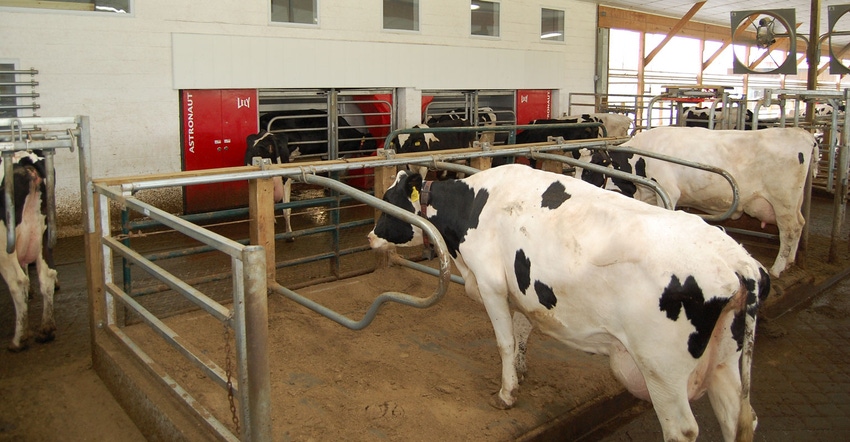June 4, 2020

Editor’s note: Timothy Terry, farming strategic planning specialist with Cornell Cooperative Extension, has compiled three stories’ worth of information on robotic milking systems based on visits to dairy farms in New York. This is the third story in the series.
There are several different robotic milking systems on the market today. While I can’t endorse any particular brand, I encourage you to do your homework if you’re considering making such an investment.
Go to farm shows, ask dealers for a list of nearby farms that are using robotic milking systems and talk to farm owners and operators, especially if you can find farms of a similar herd size.
This requires a significant initial investment, so choose wisely.
Here are the last of my tidbits from farms I visited last year:
Remember the rule of threes
3 days. The first 72 hours of startup and the length of time you will go with little to no sleep. It’s also the period where you’ll question whether you made the right decision.
3 weeks. Things are starting to fall in place and most of the bugs are worked out of the system. You’ve learned what alarms are important and urgent, but you still may not be fully convinced that you made the right decision.
3 months. You have the system dialed in. Now you can take a deep breath. You can have a date night with your spouse or go to a child’s ballgame, concert or play. Just don’t forget your smartphone.
Cross-train workers
Cross-train your staff on the various parts of the robotic milking system. No one person should hold all the knowledge of how the system works and what to do if it doesn’t.
Any good coach will tell you that you need to build depth in your team, so if anyone is on injured reserve or on vacation someone else can jump right in. NASA would call this “system redundancy.”
If at all possible, avoid making spouses or close family members backups of one another. That way if they want to attend a family function — wedding, funeral, reunion — or want to go on vacation, you won’t have both the primary and the backup gone from the farm. Obviously, smaller farms are going to have to approach this a little more creatively.
What farmers say
All the farms I toured considered a new parlor along with a robotic milking system. Here are the various reasons or considerations they cited for their decision to put in a robot:
Reduced labor, especially reliance on foreign-born employees.
More milk with less labor. In fact, one farm is at 100-plus cows per man and 2.7 million pounds full-time equivalent. This includes the cropping and maintenance staff.
Consistent udder prep.
Reduced human error and procedural drift.
No human emotion, no personality clashes between cows and humans. If a cow does not want to cooperate, the robot will eventually kick her out and in an hour or two she will be more than ready to be milked.
Labor is a growing risk or liability.
Parlors age, RMS components or the entire system may be swapped out.
Maximum parlor capacity is fixed. Additional robots can be added as the herd grows.
A new parlor requires a new facility. Robots can be retrofitted into existing facilities while continuing to milk in the existing parlor.
Prefer to manage equipment rather than people.
Cow comfort. Even a robotic rotary parlor doesn’t eliminate the time in a holding area. A holding area is not a cow-friendly place. There is no food or water, no place to lay down (even though some do), is usually poorly ventilated, etc. If it wasn’t for the fact that they are driven there they would never go to a holding area of their own accord.
Improved hoof health, more lying time, more consistent DMI.
Increased eating and resting.
Less infrastructure required — one-third of similar-capacity parlor.
Increased longevity of the cows, maybe as much as a full lactation, on average. A Semex study in 2002, one additional lactation equals around 4,000 pounds RHA.
Robots can be dismantled and relocated or even sold.
Used value? This exact number is unknown, but the current demand is high and the supply low. You do the math.
Good resale value equals lower risk.
Of the 3,000-plus robotic milking systems in the U.S. and the 30,000-plus worldwide, 70% have more than 25,000 hours each, and 50% have more than 70,000 hours. What other piece of equipment on your farm would have this kind of longevity?
To put this in perspective: If this was a vehicle traveling an average of 55 mph it would have traveled almost 4 million miles, or 8.5 trips to the Moon and back.
Terry is a farm planning specialist with Cornell Cooperative Extension’s Harvest NY program.
Read more about:
Robotic Milking SystemsYou May Also Like




